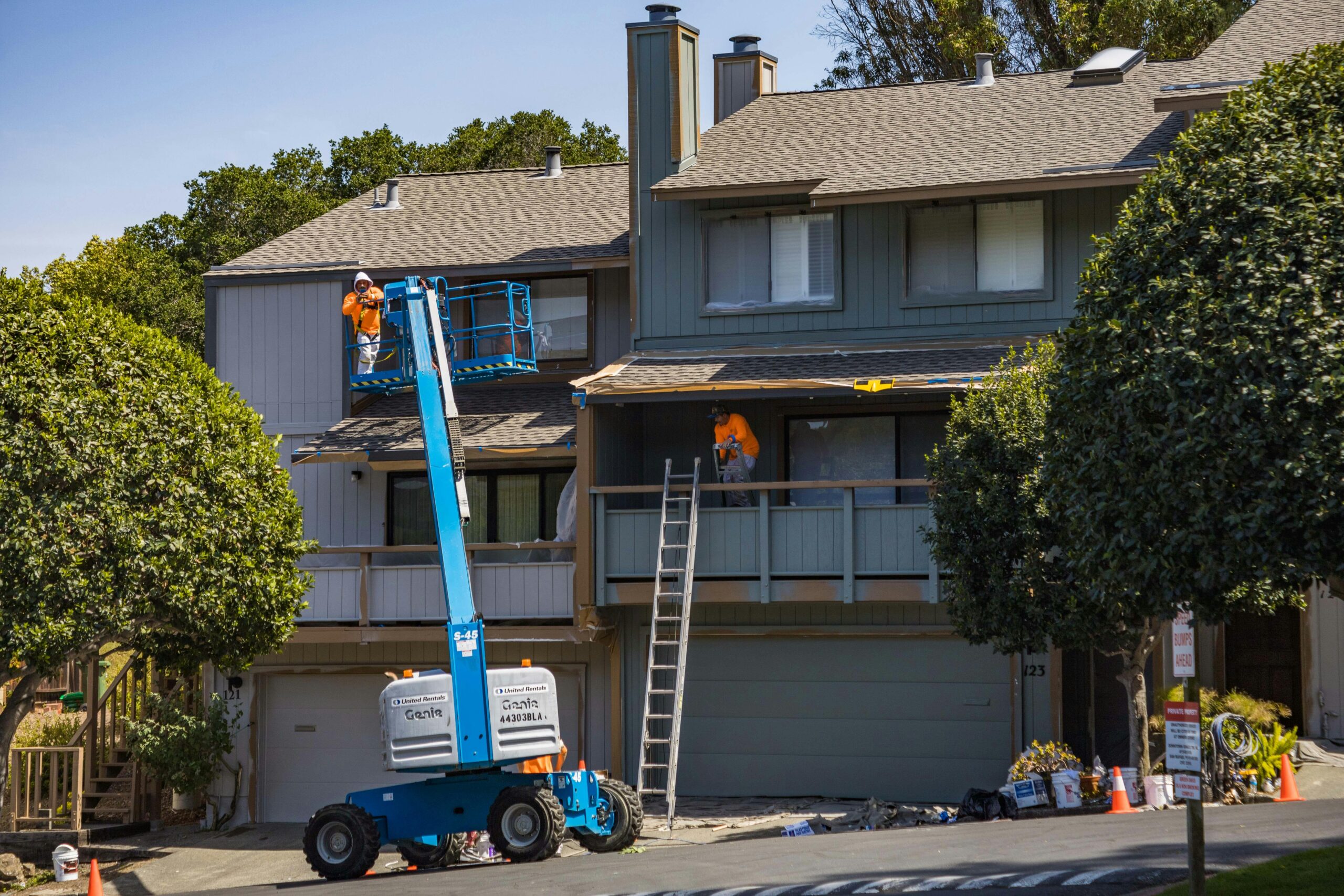
How to Repair California Storm Damage: Expert Tips for Homeowners
Repairing storm damage in California takes quick action and thoughtful planning. Here’s how to restore your home safely and effectively:
1. Assess and Document
- Ensure safety: Watch for downed power lines, gas leaks, and unstable structures.
- Protect yourself: Wear boots, gloves, and masks.
- Document damage: Take photos, videos, and detailed notes.
- Contact insurance: File a claim within 24–48 hours.
2. Address Major Damage
- Structural issues: Cracks, sagging, or leaning walls need professional attention.
- Water intrusion: Remove standing water quickly and dry out hidden areas.
- Roof damage: Look for missing shingles or leaks; use tarps if needed.
3. Work With Contractors
- Hire carefully: Get multiple quotes, check licenses, and avoid high-pressure sales.
- Prioritize repairs: Fix leaks, wiring, and gas lines first; save cosmetic work for later.
- Upgrade smartly: Use repairs as a chance to add storm-resistant materials.
3. Prepare for Future Storms
- Prevent damage: Install metal roofing, durable siding, and impact-resistant windows.
- Maintain regularly: Clean gutters, trim trees, and inspect roofs.
- Plan ahead: Schedule inspections and create a disaster plan.
When severe weather hits California, many homeowners are stuck with the difficult task of assessing and repairing property damage. Storm damage can be anything from minor cosmetic problems to major structural problems that put your home’s safety and value at risk. Responding effectively keeps your family safe and protects your investment in your home. To do this, follow these steps:
Assess and Document the Damage
Before you reenter your storm-damaged home, make safety and documentation your top priorities by:
- Conducting a safety assessment from a safe distance: Look for power lines that have fallen, gas leaks (which smell bad or hiss), and unstable structures, like walls that are leaning or have cracks in them. If you spot anything dangerous, call the utilities right away and stay somewhere else until experts ensure it’s safe.
- Equipping yourself with protective gear: Wear sturdy boots, waterproof gloves, dust masks, and long sleeves to protect yourself from debris, contaminated materials, and harmful dust or mold.
- Documenting everything comprehensively: Capture pictures and videos from multiple angles, including wide shots and close-ups. Make a list of all damaged items with their age, condition before the storm, and estimated value. Time stamp and back up all documents to the cloud. You’ll need this later when filing a claim with your insurance.
- Contacting your insurance company within 24-48 hours: Have your policy number ready and give a rough estimate of the damage. Ask about the specifics of your coverage, such as deductibles and exclusions. You can also request information on their preferred contractors, but you don’t have to use them.
A proper assessment and record-keeping simplifies your insurance claim and makes sure you have all the information you need to make smart repair choices.
Address Structural, Water, and Roof Issues
After completing your first assessment, focus on the areas that usually suffer the most storm damage. If you identify and fix issues in these areas, you can often stop them from worsening and safeguard your family.
Structural Concerns
Structural damage from storms is a serious safety risk that needs to be corrected right away. Keep an eye out for:
- Cracks in the foundation that are wider than a quarter inch;
- Doors and windows that don’t close all the way;
- Cracks in the walls or ceiling;
- Areas that are sagging;
- Places where the drywall has come loose from the framing.
- Any damage to load-bearing walls that run across floor joists.
If there’s any damage to the structure, call a professional right away. A contractor might need to install temporary supports to keep the house from deteriorating. Don’t try to fix major structural problems on your own. These require engineering expertise, permits, and inspections to meet building codes and safety standards.
Water Intrusion
Water damage is tricky because it can cause significant problems in hidden areas. Check for water stains, warped floors, standing water, musty smells, or higher humidity. Look behind appliances, in cabinets, and in closets where water might have gotten in unnoticed.
Repair water leaks as soon as possible to prevent more damage. Get rid of standing water immediately, then use fans and dehumidifiers to dry out the areas that got wet. To find saturated spots, press on the drywall and flooring to see if they feel soft and spongy. For significant damage, professional restoration services have special tools that can detect hidden moisture and dry things out quickly.
Roof Damage
Damage to your roof is a serious problem because it lets more water in, which causes even more damage. Look for missing shingles and bent flashings. You should check your attic for water leaks, disturbed insulation, or structural damage.
If you don’t want to put up temporary protection yourself, professional contractors can put up tarps and weatherproofing while you wait for permanent repairs. These permanent repairs offer opportunities to make your roof more resistant to storms. You can choose modern materials that provide superior protection against fire, wind, and hail damage.
Work With Contractors and Prioritize Repairs
If you want to restore your home fully with minimal setbacks, you need to be careful when hiring someone to make these repairs. The right contractor can help you save money by doing the projects correctly the first time, helping your home return to normal in no time.
Choosing the Right Contractor
Get a few quotes, but don’t immediately choose the cheapest. Pay attention to the materials they use, how long the job will take, and if they have experience with storm damage. Always read reviews and ask for references. Be careful, though, because storms can bring out scammers. Avoid door-to-door salespeople, anyone asking for full payment up front, or contractors who push you with high-pressure tactics.
When you do choose a contractor, make sure that their license is both up to date with the Contractors’ State License Board (CSLB) and appropriate for the work you need done.
Prioritizing Repairs
Knowing what repairs are most important helps keep costs down and safety up. Critical repairs requiring immediate attention include leaks in the roof, exposed wiring, compromised security doors and windows, damaged electrical panels, and broken gas lines. Take care of these within a few days, even if you have to use temporary fixes. You can schedule non-urgent repairs, like cosmetic damage, weeks or months after the accident.
When doing major repairs, consider making upgrades. For example, siding that is resistant to wind gives better protection against future storms and other disasters like earthquakes.
Prepare Your Home for Future Storms
After you complete the repairs, take steps to protect yourself in the future:
- Invest in preventative upgrades: Metal roofing, impact-resistant shingles, strong siding, waterproof barriers, better drainage, and impact-resistant windows are all good investments that can help keep your home safe. The costs up front may be higher, but it’s worth it to avoid storm damage in the future and lower your insurance bill.
- Maintain regularly: Clean the gutters twice a year, check the roof once a year, trim overhanging branches, check the caulking around windows and doors, and fix any minor problems you find right away.
- Schedule professional inspections: Before storm season hits, have qualified inspectors evaluate your home to find weak spots.
- Develop a comprehensive disaster recovery plan: Establish a detailed disaster recovery plan that covers the wide range of natural disasters that happen a lot in California, such as earthquakes, wildfires, and heavy storms.
These preventative steps make future storms much less expensive and damaging, while also giving you peace of mind.
Restore Your Home With Confidence
Storm damage doesn’t have to be overwhelming. You can make your home stronger by taking a methodical approach to a stressful situation. Putting safety first, working with qualified professionals, and making thoughtful repair choices can give your family a much safer future.
Don’t wait for the next storm to take its toll. Platinum Home Builders and Design Inc. has decades of experience repairing damage and fortifying California homes. Call today for expert repairs that keep your home safe and strong.
Frequently Asked Questions About Storm Damage Repair
What Should I Do Immediately After Storm Damage?
First, make sure it’s safe to enter your home by checking for hazards like downed power lines or gas leaks. Once safe, document the damage with photos and videos, then contact your insurance provider and local contractors who specialize in storm damage repair.
How Do I Know If My Roof Needs Repair or Replacement?
Common warning signs include missing shingles, sagging areas, or leaks that return after each storm. A professional roofer can provide a full inspection to determine whether repairs are enough or a replacement is necessary.
Does Insurance Cover Storm Damage in California?
Most homeowners’ insurance policies cover storm damage, but exclusions often apply to flooding or certain natural disasters. Review your policy and speak with your insurance provider to understand what’s included and what your deductible will be.
How Much Does Storm Damage Repair Cost?
Costs vary widely depending on the type and severity of damage. Minor roof patches may be affordable, while extensive water damage or structural repairs can run into the thousands. Getting multiple contractor quotes helps set realistic expectations.
How Can I Prevent Storm Damage in the Future?
Preventative steps include upgrading to storm-resistant roofing, sealing vulnerable areas, and trimming trees near your home. Regular maintenance, like gutter cleaning and siding inspections, can also reduce risks before the next storm season.




